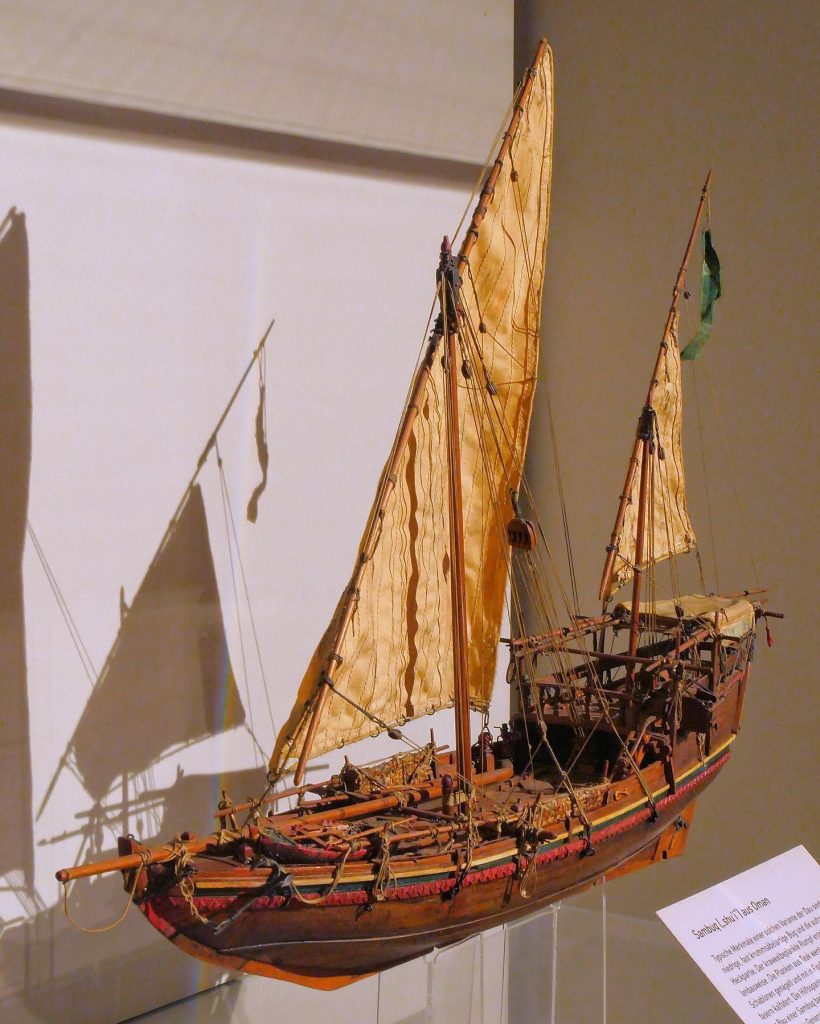
Sailing boat Sambuk. Our 1:65 scale model represents a type of boat with a particularly successful career: the sambuk – more precisely, a traditional sambuk from Oman.
Our 1:65 scale model represents a type of boat with a particularly successful career: the sambuk – more precisely, a traditional sambuk from Oman. These boats, whose origins most likely predate our era, are still widely used in the waters around the Arabian Peninsula, the Indian Ocean and the Caribbean. The term „Sanbūk“ (سنبوك) and its variants were even used synonymously for „boat“/“ship“ in the Arab languages because of the importance of the type. The word itself has its roots in the Middle Persian language.
The sambuk is a type of dhow, a wooden ship with lateen sails, whose origins are thought to be around 600 B.C. in either India or Arabia – historians have yet to agree on this. Based on its structure and construction techniques, it is possible that the Sambuk later was also influenced by the Portuguese caravels that came to the Persian Gulf and southern Arabian Peninsula area in the late 15th century. The Sambuk, like most dhows, is usually a merchant vessel.
Typical features of such a dhow variety are the low, curved, almost saber-like bow and the towering, flattened stern. Because of their relatively short keel, sambuks were very often used as vessels for pearl divers. Between sandbars, a short keel provided better navigational opportunities, which was extremely practical for this activity. Indeed, pearl diving is attested as the original use of these boats in the Oman region. The generally good qualities of their design – fast, maneuverable and with a good cargo capacity – have since given them a wide variety of tasks. The average length of a sambuk in the past was about 25 meters. The vessels traditionally had two masts with lateen sails. In the 20th century, many of these boats received an auxiliary engine or were built directly as motor boats without sails.
